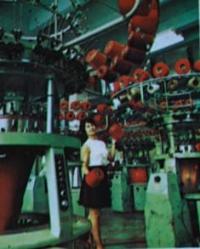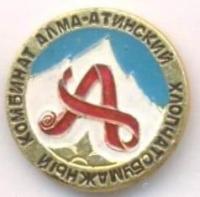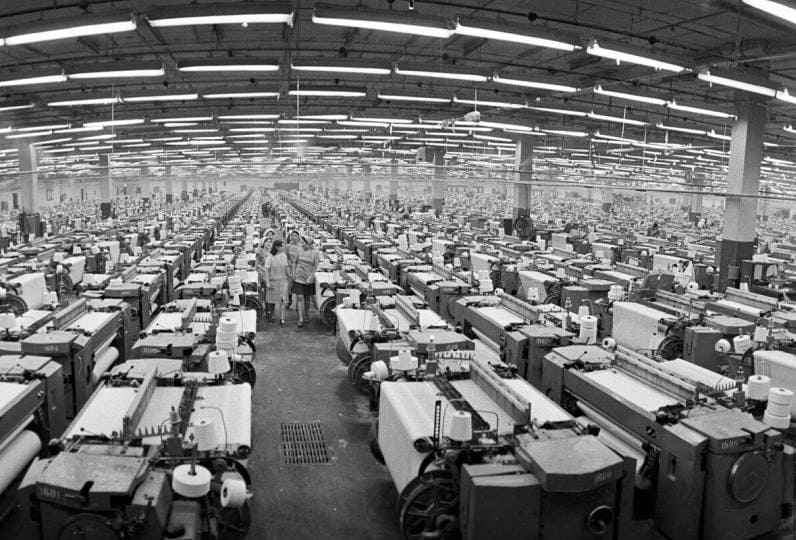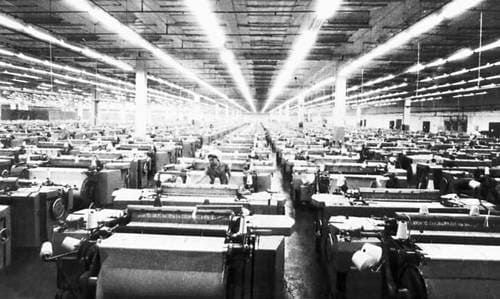Вы здесь
Alma-Ata cotton mill.


Excursion trips around Almaty.
“Since ancient times, cotton has been considered a symbol of white color and spiritual purity.”
Auezovsky district of Almaty.
Alma-Ata Cotton Mill named after 50th anniversary of October Revolution was located on Marecheka Street 1 (now Kabdolova Street), between Saina and Mate Zalki streets (current name Utegen Batyr) in Auezov district in western part of Almaty.
Almaty Cotton Mill is the largest light industry enterprise in the Republic of Kazakhstan. Construction of the enterprise began in 1961, and already in 1965 the first products were produced. Since 1967, the enterprise has been named after the 50th anniversary of the October Revolution.
On January 8, 1970, the second spinning mill (126,000 spindles) was put into operation at the plant, and in December 1970, the second stage of the weaving factory was commissioned. It produced fabrics of 13 articles, including 7 with the State Quality Mark.
The annual plan for product sales was 261.3 million rubles. 6,209 units of technological equipment were installed in 48 main and auxiliary workshops, including 93% automatic, semi-automatic and automated lines. He worked on raw materials obtained from the South Kazakhstan region, Tajik SSR, Turkmen SSR.
In the 10th Five-Year Plan, from 1976 to 1980, the plant produced 90.4% of fabrics as 1st grade, and the 4th article of products was awarded the State Quality Mark. The company annually updated up to 70% of fabric designs with a norm of 50%.
At the plant, competition was launched between shifts and teams for the production of excellent quality products; 82 shifts, 22 workshops, and 700 teams took part in it. In 1981, the AKHBK team produced the billionth meter of natural fabric. In general, in Soviet times, AKHBK was one of the largest enterprises in the city and bore the title of an enterprise of high efficiency and quality of work.
AKHBK was the only enterprise in Kazakhstan that processed cotton fiber into fabric.
One loom cost an average of US$80,000. The design capacity of the plant: processing 15,000 tons of cotton fiber per year, this equaled 70 - 80 million linear meters. Countries consuming the plant's products: Russia, Ukraine, Italy, Spain, USA, Canada.
Today, the largest city-forming plant does not exist; in the 1990s, the plant stopped, 10,000 people were left without work. Until 1992, the number of employees of the enterprise was more than 9,000 people. After the declaration of independence of Kazakhstan, AKhBK was corporatized under the program of privatization and denationalization and put into private ownership.
After the plant was transferred into private hands, a reduction in workers and production volumes began. As of 2002, the plant was operating at 10% capacity. In 1999 - 2002, private owners and shareholders of AKHBK took out credit loans of $4 million at Temirbank at 17% per annum.
he collateral was the entire production complex of the plant. As a result, the loan funds were not used for the development of the plant, but disappeared. The bank took the shares and the plant itself. The plant's property (machines, communications) began to be sold off; by 2002, only concrete walls remained of the plant.
Part of the production space (a workshop measuring 100,000 square meters has been turned into the Armada shopping center since 2003, while the other part of the buildings was spontaneously dismantled. In 2016, the Grand Park shopping center was built on the site of the second former workshop of AKHBK.
Geographic coordinates of Alma-Ata Cotton Mill: N43°14'18 E76°51'08

Authority and photos by:
https://ru.wikipedia.org/wiki/%D0%90%D0%BB%D0%BC%D0%B0-







